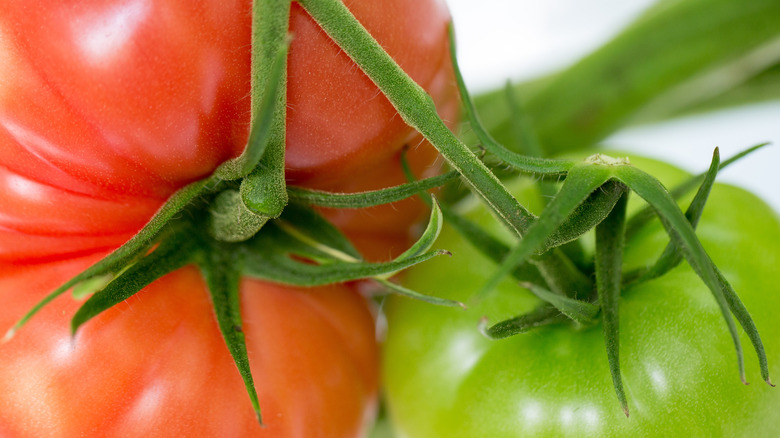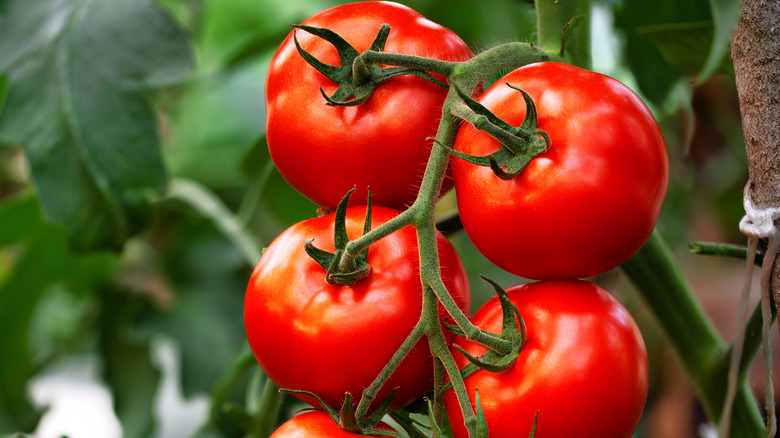This Is The Reason Tomatoes Change Color When Ripe
While many would agree that a ripe and juicy red tomato is summer's best veggie, green tomatoes are a treasure in their own right. Incredibly versatile and delicious, enjoying green tomatoes is not only a great way to taste all summer has to offer, but it can show you another side of this all-star veggie in its first stage of ripeness (via The Spruce Eats). Some people even prefer green tomatoes over red! Red or green, you really can't go wrong with one of the most multi-faceted veggies that's a basis for sauces, sandwiches, soups, and more.
What color is a tomato? Most people would say red, obviously, but as the Chicago Botanic Garden points out, tomatoes can also take on a spectrum of shades: yellow, pink, purple, orange, and green. Like green leaves on trees turning brown and red in the fall, tomatoes change color with the season too as they undergo ripening. If you've ever wondered how a rock-hard green tomato can turn into a juicy, delicious red tomato, it all comes down to science.
Chlorophyll and lycopene cause the color change
Like most green plants, unripe tomatoes have a chemical inside them called chlorophyll, according to National Geographic. Basically, chlorophyll makes things green. Chlorophyll is the chemical used for photosynthesis and is how the tomato gathers the light it needs to grow.
Another chemical, lycopene, is responsible for the tomato's red color, says Mental Floss. While all tomatoes contain lycopene while they're green, the saturation skyrockets as the harvest season approaches. Cold snaps and lower light cause the chlorophyll to dissolve (think of that potted plant that withers away on the window sill when the first rumbling of fall weather hits). Once that chlorophyll is out of there, it's lycopene's time to shine. Cue the beautiful color change as they start to ripen and turn that signature red color.
Once this process starts, it's all systems go and the ripening happens quickly. Because this process can happen in the blink of an eye, some farmers choose to pick the unripe green tomatoes and finish the ripening artificially with ethylene gas, the same natural gas responsible for turning your bananas brown. Once tomato season hits, there's a huge influx of plump, ripe tomatoes at stores and farmer's markets across the country. Then, it's time to break out your best tomato recipes and get cooking.

